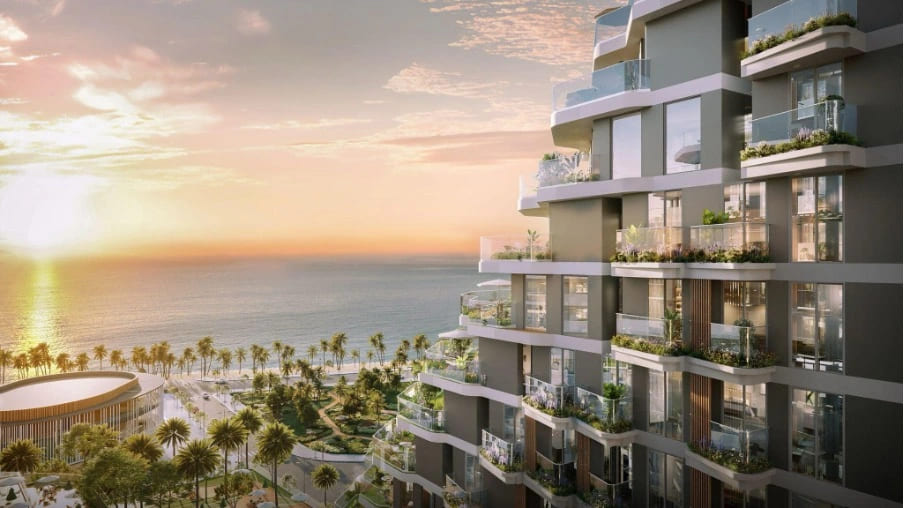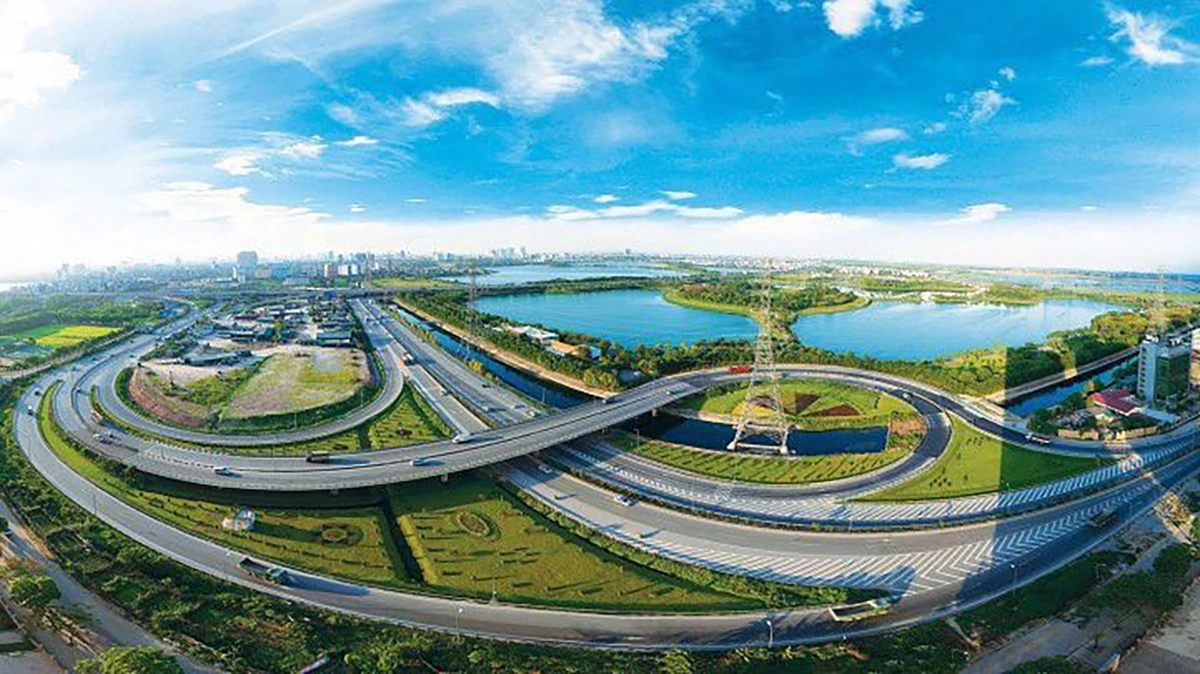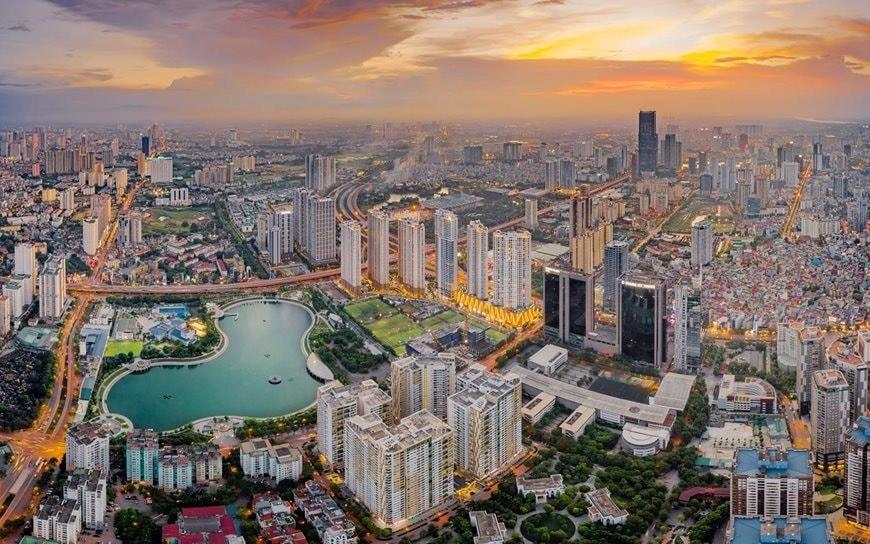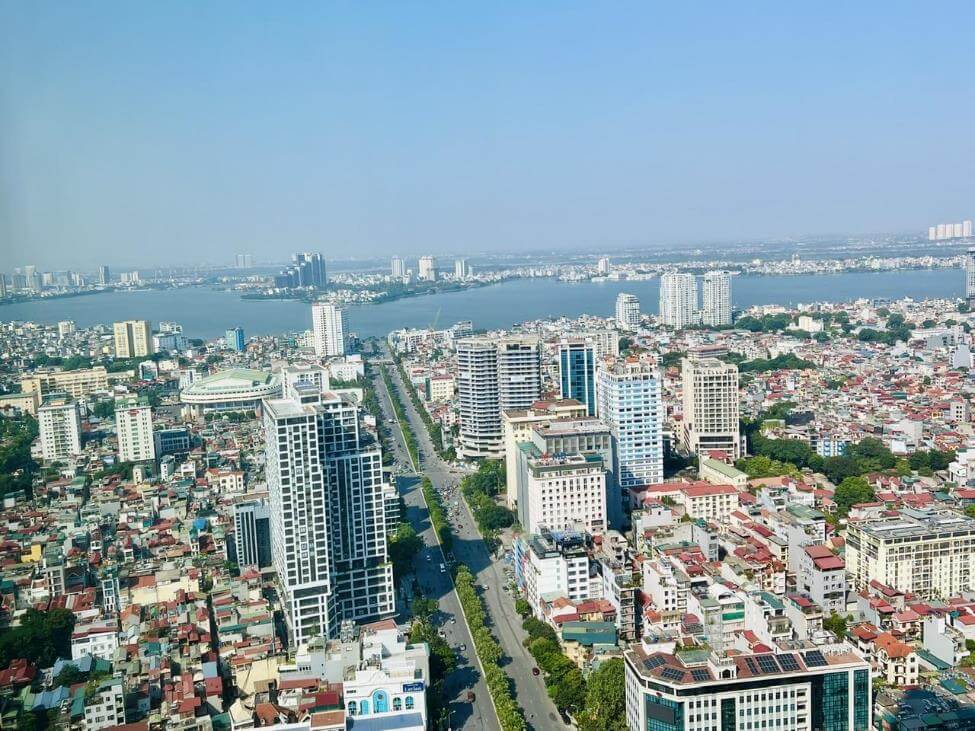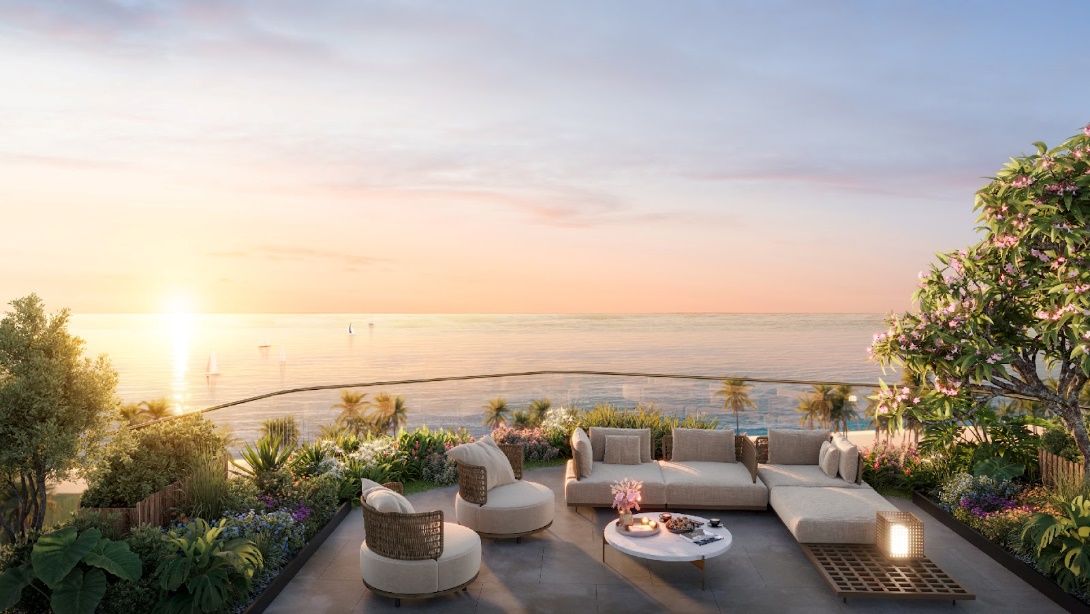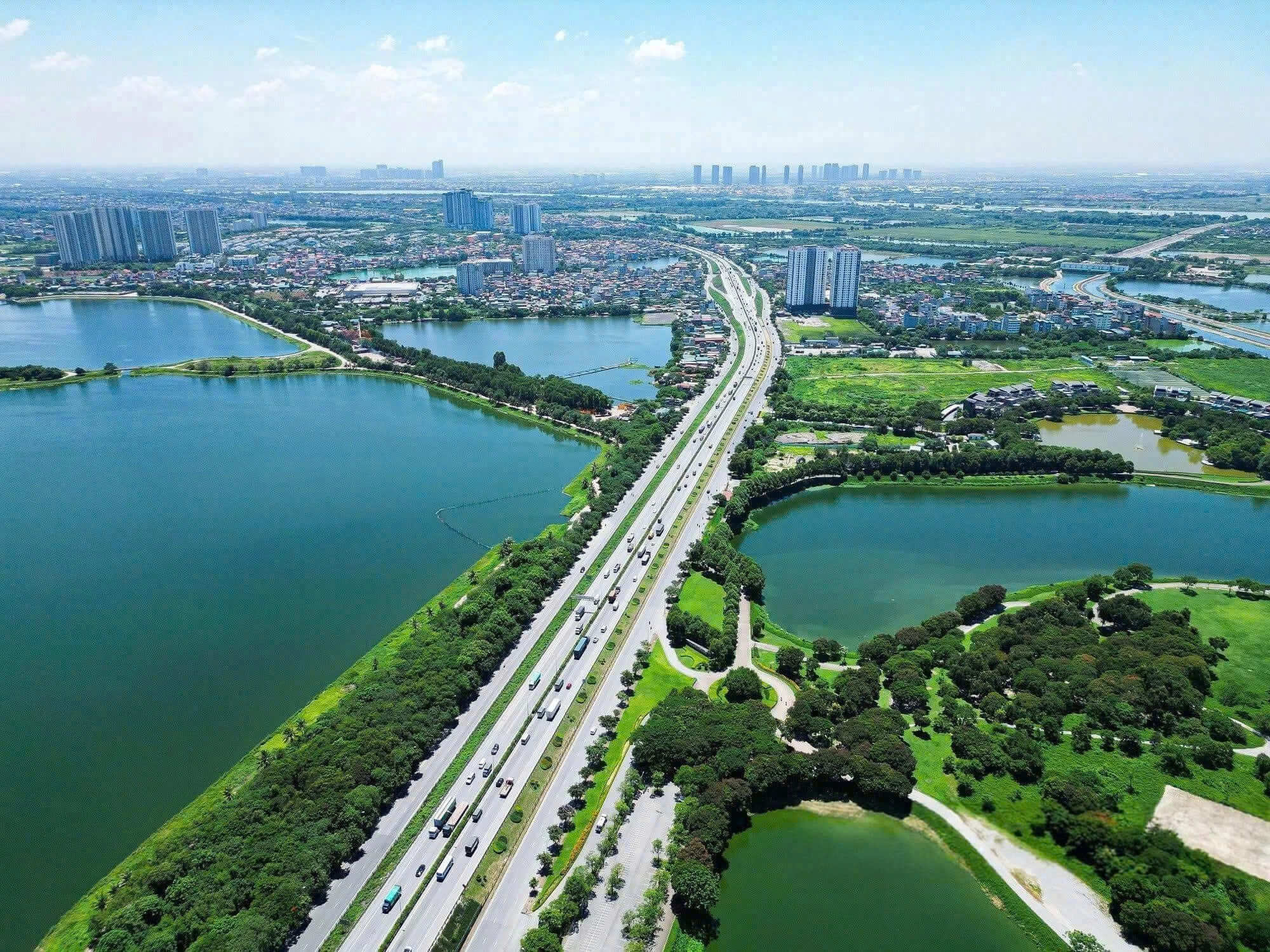Competitive prices, investment infrastructure and green space advantages help increase the attractiveness of real estate in South Hanoi.
According to the latest report from CBRE, the Hanoi real estate market recorded an increase in supply in 2024, mainly from the metropolitan areas in Nam Tu Liem and Gia Lam. In the fourth quarter, the average primary price of apartments reached VND72 million per square meter, up 36% over the same period last year – the highest level in eight years.
The West and East of the capital continued to lead in supply in the first quarter of 2025, with an average price of about VND75 million per square meter, up 34% over the same period.
Meanwhile, real estate prices in Hoang Mai district – a typical representative of the South – were only about two-thirds of those in the West and East, according to data from Batdongsan.com.vn. With its price advantage, Hoang Mai recorded a sharp increase in transaction volume, entering the top 5 areas with the highest liquidity in 2024, according to statistics from OneHousing.
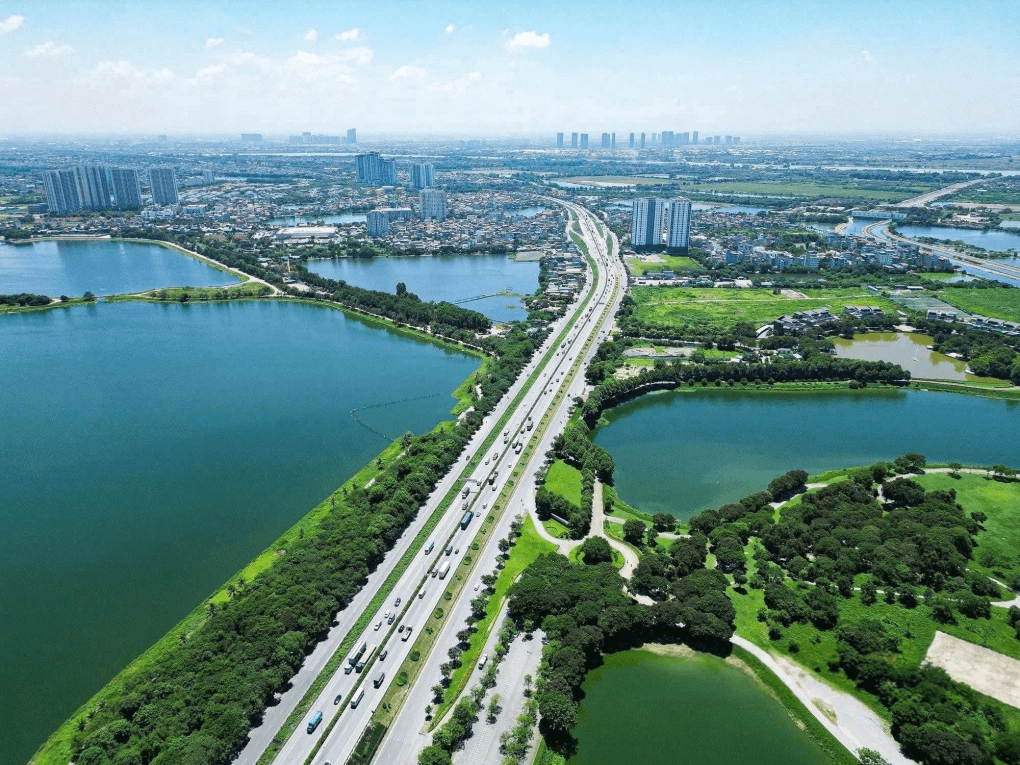
Infrastructure in the South of Hanoi. Photo: Phuong Hong
Hanoi is considering building a second airport in the southern region, with a designed capacity of 50 million passengers per year, according to the Project to adjust the General Planning to 2045, vision to 2065.
Along with that, the city proposes to develop a “southern city” – an integrated urban area that plays the role of a multimodal transport service center, connecting aviation, national and urban railways, waterways (Red River), and expressways such as Phap Van – Cau Gie, National Highway 5B.
Over the past decade, the infrastructure of the southern region has been invested in a systematic manner, notably with Ring Road 3 – especially the elevated section Linh Dam – Mai Dich, connecting the East – West – South – North directions. This route not only shortens the time to the center, but is also a strategic transport corridor.
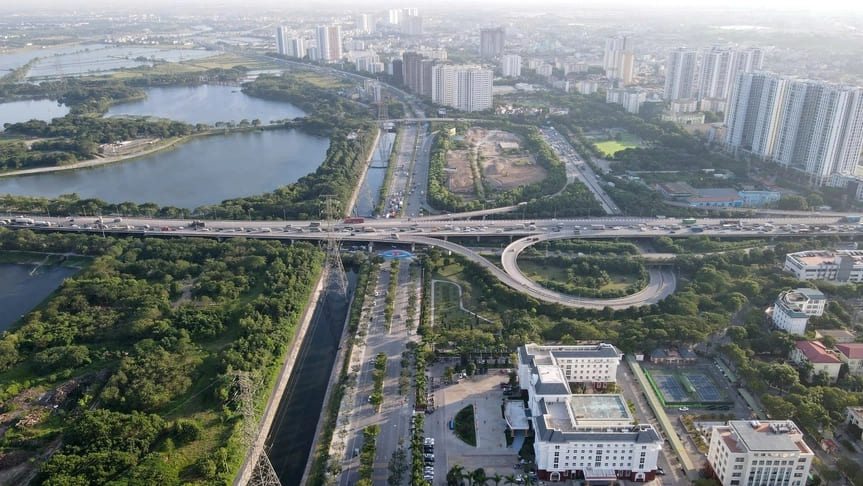
The traffic infrastructure system is systematically planned in the South of the capital. Photo: Trong Hieu
The Phap Van – Cau Gie Expressway and National Highway 1A help the area play the role of a gateway connecting with neighboring provinces. The Giai Phong – Ngoc Hoi axis continues to lead the traffic flow from the center to the South.
In the near future, the 4th ring road of the capital region will create a network connecting satellite cities and seven key highways in the North. Urban railway line No. 8 (Son Dong – Duong Xa) is expected to pass through Thanh Tri district, expanding the connection between the South and the inner city.
A big plus point of the South is the living space. According to Maison Office, the population density in Hoang Mai is about 13,400 people per square kilometer, Thanh Tri is more than 4,500 people per square kilometer, significantly lower than Hai Ba Trung, Dong Da, Thanh Xuan districts.
The area also has many green spaces such as Linh Dam lake, Yen So lake, Yen So park with an area of 323 hectares. In addition, many new urban areas here also integrate parks and small playgrounds, creating a fresh living environment.
The South of Hanoi has also become a bright spot with increasingly complete infrastructure. This area gathers a series of large hospitals such as Bach Mai, Viet Phap, Central Ear, Nose and Throat, along with universities such as Bach Khoa, National Economics, Construction, etc.
Recently, some investors have also chosen the South to develop projects, meeting the needs of residents leaving the inner city. According to many experts, the trend of prioritizing green living space will be a driving force for real estate in this area.
Song Anh


